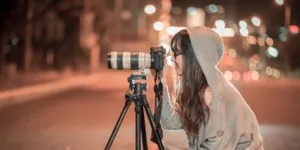While most of the people have already heard about the term “HDR”, which is one of the settings in their phone’s camera, not many people are actually aware on how to use it and when. Well, this setting is supposed to make your pictures look great. However, if you don’t use it properly, the same pictures may turn out to be blurry or just washed out! So here, let us explore more about HDR in the following sections!
Important Basics on HDR
HDR is an abbreviated form of High Dynamic Range imaging. It is basically old photography practice that is introduced recently. This is actually a method for adding more “dynamic range” to the photographs. Here, dynamic range is light to dark ratio in photograph. Rather than taking just one picture, HDR makes use of three photos that are taken at the different exposures.
You can then make use of photo editor software to put all these images together and then highlight only the best parts of each of the photo among the three. However, if the HDR is a feature in your smart-phone, then you do not need to worry at all since your phone is the one that does all the required work for you. All you need is just snap a picture and it will automatically split a single regular photo and single HDR photo. The ultimate result will be something your eyes see instead of what the camera sees!
When HDR should be used?
As we know now, HDR is specifically designed to capture better looking photos. The following are the instances you can try using HDR.
- Portraits in Sunlight – When it comes to taking good photo, lighting is indeed the most essential aspect to consider. However, excess of lighting on anyone’s face may cause bright glare, dark shadows, and other such unflattering characteristics. In such case, using HDR can make a great difference since it can make the subject look better.
- Landscapes – Large landscape photos normally have lot of contrast between land and sky which can be quite complex for the camera to deal with in a single photo. However, with HDR, you can easily capture sky’s detail without the land appearing too dark.
- Backlit and low-light scenes – If the photo you have captured appears too dark, then it might be due to an ample of backlight in the scene. HDR can easily brighten up foreground without washing out the portions of the photos that are well-lit.
When HDR shouldn’t be used?
Sometimes, using HDR might make the pictures look even worse. The following are some situations when you should ignore using it.
- High contrast scenes – Some photos just look good with stark contrast between light and dark parts of photo. HDR may make this very less intense.
- Photos with movements – If any of the subjects move or are already moving then HDR may increase chance of blurry photo.
You can always use HDR just to see what the actual comparison looks like before you turn it off altogether. When it comes to photography, experimenting is a key to success!








